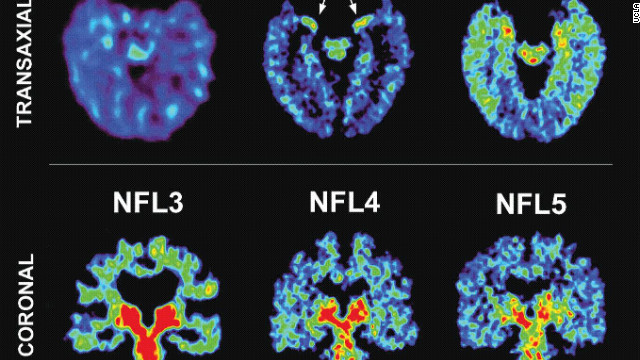NFL says a quarter of players will end up with brain problems
REUTERS
(Reuters) – About one in four National Football League players are likely to end up suffering dementia, Alzheimer’s disease, Parkinson’s disease or other cognitive impairments during their lifetime, according to a report filed in court by the league’s lawyers.
The NFL submitted the summary of the findings of an actuarial study it had commissioned in the U.S. District Court for Eastern Pennsylvania on Friday as part of the ongoing litigation between former players and the league.
The study by the Segal Group, based in New York City, used a database of the medical history of retired players as part of its method.
The report appears to be the most definitive statement the NFL has yet made on the dangers of the sometimes violent sport, where players can develop concussions as they butt helmeted heads with those of other players.
The report said 28 percent of the “overall player population” and a third of the 5,000 plaintiffs who sued the league, will be diagnosed with cognitive impairment during their lifetime, according to the court filings.
The chances of players developing these problems “are materially higher than those expected in the general population,” the lawyers’ summary of the report said. Players will develop these diagnoses “at notably younger ages than the general population,” the summary said.
In 2013, the NFL agreed to pay more than $760 million to settle a lawsuit brought by more than 4,500 former players who had sued the league, accusing it of hiding the dangers of brain injury while profiting from the sport’s violence.
In June, the league agreed to remove a $675 million ceiling it had placed on payments to former players.
The NFL commissioned the Segal Group to complete the study to see if the money set aside for the settlement would cover all the claims.
Brad Karp, one of NFL’s lawyers in the lawsuit, said in a statement that the Segal models “do not reflect a prediction of the number of players who will suffer injuries.”
“They are intended to show the court that even if unexpectedly high numbers of players were injured,” his statement said, “there still would be sufficient money to pay the claims.”
In the court filing, the authors of the Segal report say the assumptions on which their projections are based were “reasonable and conservative.”
(Reporting by Brendan O’Brien in Milwaukee; Editing by Jonathan Allen, Bernard Orr and Lisa Shumaker)

